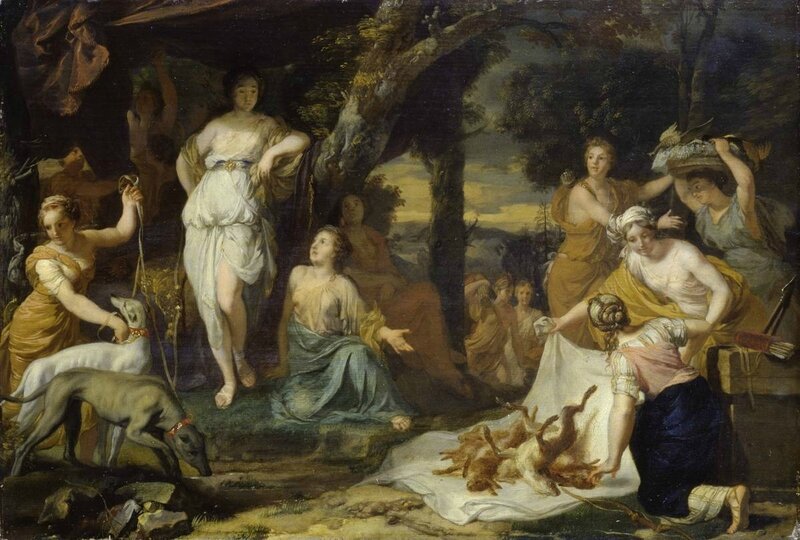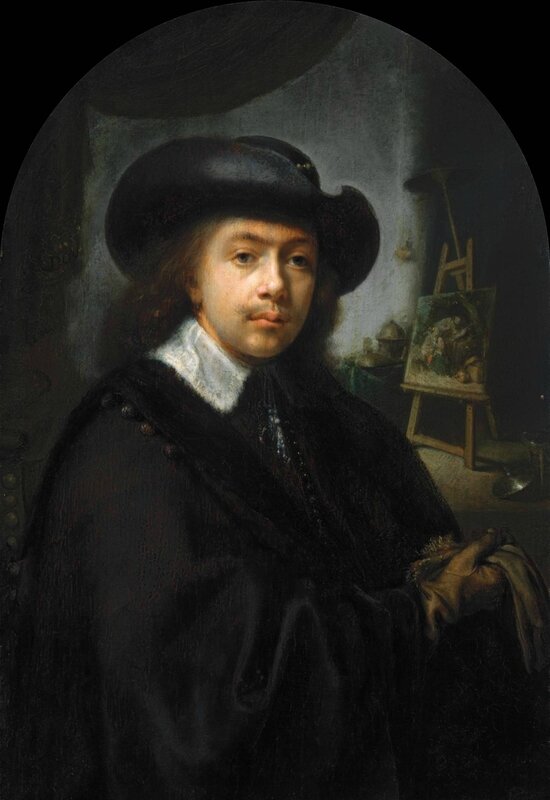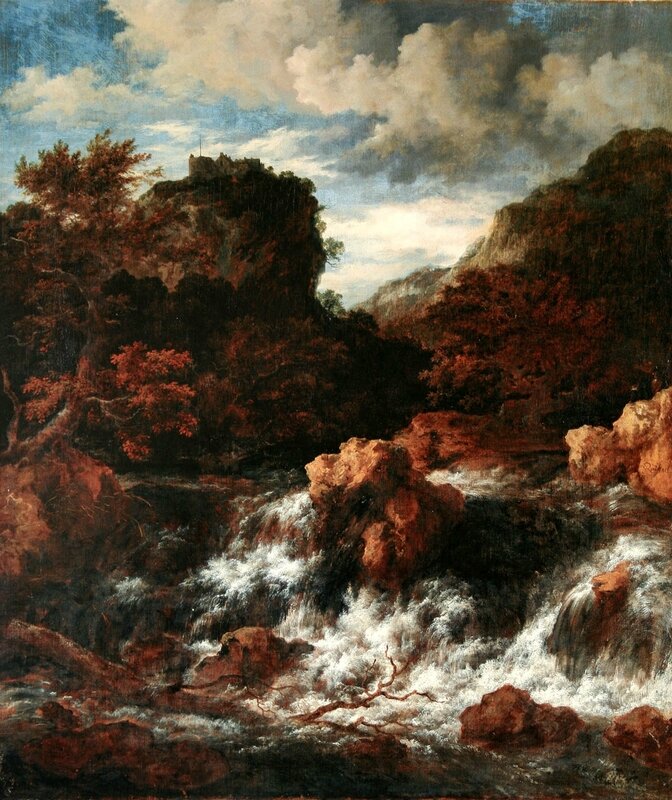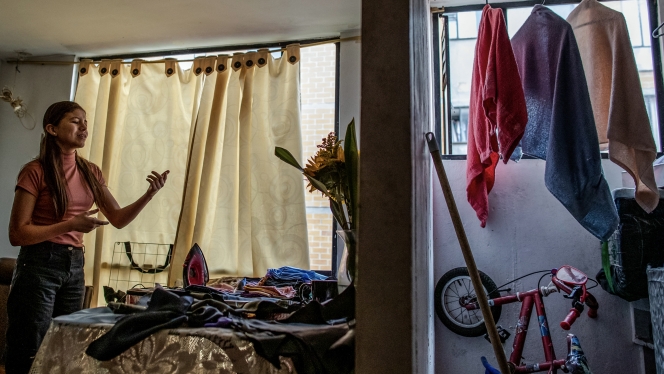![An extremely fine and rare blue and white 'Bajixiang' bowl and cover, Marks and period of Xuande]()
![3]()
![4]()
![5]()
![6]()
Lot 3301. An extremely fine and rare blue and white 'Bajixiang' bowl and cover, Marks and period of Xuande (1426-1435); overall h. 10.7 cm, 4 1/4 in.; d. 17.8 cm, 7 in. Estimate 35,000,000 — 55,000,000 HKD (3,791,711 - 5,958,403 EUR). Photo: Sotheby's.
superbly potted with deep angled sides moulded with two raised fillets towards the lower body, rising from a short tapering foot to a flared rim, the exterior finely painted with the bajixiang emblems resting on stylised lotus blooms wreathed by curling stems issuing leaves, above a garland of trefoil foliate motifs, all divided by line borders, the domed cover similarly decorated with the bajixiang enclosed within lotus wreath, below radiating lappets encircling a raised circular finial, covered overall in an unctuous transparent glaze, the underside of the cover and interior of the bowl inscribed with a six-character mark within a double circle.
Provenance: Collection of Edward T. Chow (1910-1980).
Sotheby's Hong Kong, 25th November 1980, lot 5.
Collection of T.Y. Chao (1912-1999).
Sotheby's Hong Kong, 19th May 1987, lot 231.
Literature: Sotheby's Hong Kong – Twenty Years 1973-1993, Hong Kong, 1993, pl. 79.
Sotheby’s: Thirty Years in Hong Kong, Hong Kong, 2003, pl. 231.
Preparing Wine for the Xuande Emperor
Regina Krahl
With its distinct form, Buddhist design and impeccable quality, this covered bowl is a model piece of Xuande (1426-1435) imperial porcelain and appears to have no companion piece besides examples from the Qing imperial collection, now held in the National Palace Museum, Taipei. Outside the palace collections in Taipei and Beijing, only four other bowls of this form appear to be preserved worldwide complete with their covers, only one of them remaining in a private collection, none of the present pattern.
Bowls of this form, which is in every way exceptional, occupy an important place in the repertoire of early Ming (1368-1644) porcelains. Bowls with matching covers were rare throughout China’s history and were clearly conceived for a distinct purpose. What is particularly remarkable about this model is that both bowl and cover bear reign marks, and that the marks are prominently placed in the centre of the otherwise plain insides, thus immediately catching the eye, when the cover is lifted. A similar placement is otherwise known only from stem bowls and cups, and one may wonder whether use in a ritual context may be the reason for this.
The Buddhist connotation of the lotus-and-emblem design on this bowl would support such usage. The Xuande Emperor, although himself a diligent Confucian ruler, at the same time continued the patronage of Buddhist causes that had been a strong feature of his grandfather’s reign, the Yongle period (1403-1424), when Tibetan clerics played an important role at the court and Tibetan Buddhist imagery found entry into various areas of the material culture. Buddhist monasteries and temples were constructed or renovated to imperial order, including the Da Baoensi in Nanjing with its porcelain pagoda, begun by the Yongle and completed for the Xuande Emperor under supervision of the eunuch admiral Zheng He, who had undertaken gigantic sea voyages for both rulers. Gilt-bronze Buddhist sculptures were cast in the imperial workshops, inscribed with the mark of the current reign, noting imperial bestowal; Buddhist sutras were imperially commissioned, lavishly written in gold on indigo paper or printed with complex woodblock illustrations; and items for use in Buddhist ceremonies were specially crafted by imperial textile, porcelain and other workshops, to provide imperial donations to Buddhist monasteries or for use in the places of worship inside the Forbidden City.
Formal lotus scrolls with blooms supporting the Eight Buddhist Emblems were one of the classic patterns decorating objects with Buddhist connotations since the Yongle period, when the motif can be seen, for example, on cloisonné mandala bases, gold-engraved lacquer sutra covers, embroidered silk streamers, etc. (Defining Yongle. Imperial Art in Early Fifteenth-Century China, The Metropolitan Museum of Art, New York, 2005, catalogue pls 9, 22 and 34). On porcelains it appeared only in the Xuande period, when blue-and-white began to be used in a Buddhist context and largely replaced the monochrome white Buddhist ritual vessels of the Yongle reign; besides these covered bowls we find it, for example, on thick-walled bowls, bowls on a tall foot, stem cups, large dishes and jars (Mingdai Xuande guanyao jinghua tezhan tulu/Catalogue of the Special Exhibition of Selected Hsüan-te Imperial Porcelains of the Ming Dynasty, Taipei, 1998, cat. nos 44, 93, 116, and 184; and The Complete Collection of Treasures of the Palace Museum. Blue and White Porcelain with Underglazed Red, Shanghai, 2000, vol. 1, pl. 107).
The elegant profile of the present model, with the rims of both parts meeting in a harmonious outward flaring curve, is superbly calibrated, and a precise fit of bowl and cover required expert craftsmanship. With its angular edge above the foot and the double raised ribs just above that, the shape would seem to be based on a metal prototype. The reason that metal prototypes are difficult to find, may be that they were made of gold or silver and have long been melted down. In China this shape is known as he wan, variously written with two different he characters to signify either a closed bowl or a bowl for preparing food or drink.
A covered bowl of similar outline, probably made of gold, can be seen on a table laid with wine vessels in the handscroll Emperor Xuanzong at Leisure from the collection of the Palace Museum, Beijing, which depicts the Xuande Emperor watching performances of various games and taking part in some of them himself (fig. 1); see Classics of the Forbidden City: Splendors from the Yongle and Xuande Reigns of China's Ming Dynasty, Palace Museum, Beijing, 2012, pl. 92, and the exhibition catalogue Ming. Fifty Years that Changed China, The British Museum, London, 2014, fig. 127, pp. 144-7; the table itself is also reproduced in a line drawing in Jingdezhen chutu Ming Xuande guanyao ciqi/Xuande Imperial Porcelain excavated at Jingdezhen, Chang Foundation, Taipei, 1998, p. 160, together with another table from that painting laid with food vessels. Jessica Harrison-Hall states that such bowls are believed to have been used for mixing alcohol (Ming Ceramics in the British Museum, London, 2001, p. 131). The table in the painting shows besides the covered bowl one large and two somewhat smaller golden wine jars and covers on red lacquer stands, a gold wine ewer, gold bottle, and a gold cup and cup stand, all placed in front of a table screen depicting a misty landscape.
![7]()
Emperor Xuanzong at Leisure, Ming dynasty, handscroll, ink and colours on silk (detail)© Collection of the Palace Museum, Beijing.
According to the inventory of porcelains in the National Palace Museum, Taipei, Gugong ciqi lu [Record of porcelains from the Old Palace], Taipei, 1961-6, vol. 2, part 1, pp. 119-22, the museum possesses twenty-seven blue-and-white covered bowls of this form, thirteen of them of the present design with lotus scrolls and Buddhist emblems, with minor variations in their measurements; one of these companion bowls was included in the Museum’s Xuande exhibition, op.cit., 1998, cat. no. 52 (fig. 2), together with other blue-and-white covered bowls of this form decorated with lotus scrolls only, with ‘Indian lotus’ (or stylized pomegranate) scrolls, and with detached flower sprays, cat. nos 50, 51 and 53, as well as a blue-and-white bowl without cover painted with dragons, cat. no. 54, and two covered dragon-decorated bowls painted in underglaze blue and overglaze or underglaze red, respectively, cat. nos 55 and 56. While none of these featured in the Museum’s earlier Xuande exhibition, Ming Xuande ciqi tezhan mulu/Catalogue of a Special Exhibition of Hsuan-te Period Porcelain, National Palace Museum, Taipei, 1980, a later non-imperial copy based on this design, with spurious Xuande mark, was included, cat. no. 50.
![Blue and white ‘lotus and bajixiang’ bowl and cover, marks and period of Xuande, Qing court collection © Collection of the National Palace Museum, Taipei]()
Blue and white ‘lotus and bajixiang’ bowl and cover, marks and period of Xuande, Qing court collection© Collection of the National Palace Museum, Taipei.
Only one bowl and cover of this form, decorated with lotus scrolls but lacking the emblems, appears to be remaining in the collection of the Palace Museum, Beijing, from the Qing (1644-1911) court collection, illustrated in The Complete Collection of Treasures, op.cit. pl. 157 (fig. 3), together with two such bowls without cover, with dragons and with flower sprays, pls 155 and 156; the latter two illustrated again, together with a third bowl without cover, decorated with ‘Indian lotus’, in Geng Baochang, ed., Gugong Bowuyuan cang Ming chu qinghua ci [Early Ming blue-and-white porcelain in the Palace Museum], Beijing, 2002, vol. 2, pls 151-3.
![Blue and white ‘lotus’ bowl and cover, marks and period of Xuande, Qing court collection, © Collection of the Palace Museum, Beijing]()
Blue and white ‘lotus’ bowl and cover, marks and period of Xuande, Qing court collection, © Collection of the Palace Museum, Beijing.
Apart from these bowls from the two palace collections, only four examples with cover appear to be preserved worldwide: one decorated with dragons, from the Sir Percival David Collection in the British Museum, is illustrated in Regina Krahl and Jessica Harrison-Hall, Chinese Ceramics. Highlights from the Sir Percival David Collection, London, 2009, pl. 30, together with two bowls of this form without covers, one with underglaze-red, the other with overglaze-red dragons; another covered bowl in the British Museum is painted with lotus scrolls only, the bowl having been purchased without a cover, and a matching cover later donated by Oscar Raphael, see Jessica Harrison-Hall, op.cit., 2001, no. 4:19; another lotus-decorated example, apparently unpublished, is in the Asian Art Museum of San Francisco, acquisition number B69P18L.a-b; and one other dragon-decorated bowl from the collection of Mr and Mrs R.H.R. Palmer, now in the Au Bak Ling collection, included in several exhibitions of the Oriental Ceramic Society, e.g. The Arts of the Ming Dynasty, London, 1957, cat. no. 123, was sold at Christie’s Hong Kong, 17th January 1989, lot 568 (fig. 4).
![Box-bowl and cover, Ming dynasty, Xuande marks and period, AD1426–35]()
![8]()
Box-bowl and cover, Ming dynasty, Xuande marks and period, AD1426–35. Porcelain with underglaze cobalt-blue, Jingdezhen, Jiangxi province. Height: 103 millimetres, Diameter: 175 millimetres. Sir Percival David Foundation of Chinese Art, PDF.684 © 2017 Trustees of the British Museum
Porcelain bowl with domed cover. There are two five-clawed dragons among clouds in underglaze cobalt blue on the sides and on the lid. There are marks inside the lid and the bowl.
The shape of this bowl with its angular profile and slightly domed cover was invented in the Xuande era and is called a 盒碗 (hewan ‘box bowl’). Porcelain decorators painted it with a dragon on both sides chasing a flaming pearl among clouds using underglaze cobalt-blue. The bowl is marked inside with a six-character Xuande reign mark in a double ring which is repeated inside the cover.
![Box-bowl with iron-red dragons, Ming dynasty, Xuande mark and period, AD1426–35]()
![9]()
Box-bowl with iron-red dragons, Ming dynasty, Xuande mark and period, AD1426–35. Porcelain with underglaze cobalt-blue with overglaze iron-red, Jingdezhen, Jiangxi province. Height: 75 millimetres, Diameter: 173 millimetres. Sir Percival David Foundation of Chinese Art, PDF.A778 © 2017 Trustees of the British Museum
Porcelain bowl. Decorated with underglaze blue and overglaze iron red enamel. Two five-clawed dragons in red enamel around sides, among blue clouds. Band of turbulent blue waves around base. There is a mark on the base.
The shape of this bowl with its angular profile was invented in the Xuande era and is called a 盒碗 (hewan ‘box bowl’). Porcelain decorators painted it with a dragon on both sides chasing a flaming pearl among clouds using overglaze iron-red. Potters in the early fifteenth century very rarely used iron-red which required a second firing. Originally the bowl would have had a matching shallow slightly domed cover and looked like a box. The bowl is marked inside with a six-character Xuande reign mark in a double ring.
![Box-bowl with iron-red dragons, Ming dynasty, Xuande mark and period, AD1426–35 PDFA678]()
![9]()
Box-bowl with iron-red dragons, Ming dynasty, Xuande mark and period, AD1426–35. Porcelain with underglaze cobalt-blue with overglaze iron-red, Jingdezhen, Jiangxi province. Height: 75 millimetres, Diameter: 173 millimetres. Sir Percival David Foundation of Chinese Art, PDF.A678 © 2017 Trustees of the British Museum
![Porcelain covered bowl with underglaze blue decoration, Ming dynasty, Xuande mark and period, AD1426–35]()
Porcelain covered bowl with underglaze blue decoration, Ming dynasty, Xuande mark and period, AD1426–35. Diameter: 17.5 centimetres (at rim), Height: 10.3 centimetres (with cover). 1930,0421.2. © 2017 Trustees of the British Museum.
This covered bowl has a slightly angular profile with an everted rim, and a sharply cut-away bottom to the broad foot ring. Two raised ridges encircle the lower half of the body. Outside the bowl is decorated with a formalized lotus scroll with lappets around the bowl above the foot ring. Both cover (BM 1939.0516.1) and bowl are marked inside with six-character underglaze blue Xuande reign marks in a double ring.
The bowl is married to a a cover (BM 1939.0516.1) and, although acquired at different times, are quite well matched. Porcelain covered bowls are an innovation of the Xuande period. At the imperial kilns at Jingdezhen they were made with varied decoration. Examples with underglaze red, underglaze blue with underglaze red, underglaze blue with overglaze iron-red and red glazed examples have been excavated to date. A covered bowl identical to the present example is in the collections of the National Palace Museum, Taipei. Another covered bowl of this type is in the Asian Art Museum in San Francisco. Such bowls are believed to have been used for mixing alcohol.
![Blue and white ‘dragon’ bowl and cover, marks and period of Xuande, Collection of Au Bak Ling, formerly collection of Mr and Mrs R]()
Blue and white ‘dragon’ bowl and cover, marks and period of Xuande, Collection of Au Bak Ling, formerly collection of Mr and Mrs R.H.R. Palmer, Christie’s Hong Kong, 17th January 1989, lot 568.
A bowl of the same form and design as the present example but lacking a cover was also reconstructed from sherds discovered at the Ming imperial kiln site at Jingdezhen, and included in the exhibition Jingdezhen chutu Ming Xuande guanyao ciqi/Xuande Imperial Porcelain excavated at Jingdezhen, Chang Foundation, Taipei, 1998, cat. no. 18. Two further bowls of this design without cover are preserved in China, in the National Museum of China, Beijing, illustrated in Zhongguo Guojia Bowuguan guancang wenwu yanjiu congshu/Studies on the Collections of the National Museum of China. Ciqi juan: Mingdai [Porcelain section: Ming dynasty], Shanghai, 2007, pl. 41; and in the Shanghai Museum, illustrated in Lu Minghua, Shanghai Bowuguan zangpin yanjiu daxi/Studies of the Shanghai Museum Collections: A Series of Monographs. Mingdai guanyao ciqi [Ming imperial porcelain], Shanghai, 2007, pl. 4-19.
Besides the present and the Palmer bowl, only two bowls of this form were ever offered at auction, both without covers: a bowl of the same design as the present piece, in our New York rooms, 4th December 1985, lot 233; and one with detached flower scrolls in these rooms, 24th November 1981, lot 84.
Like all remarkable designs of the Song (960-1279) and Ming periods, these bowls found their echo in the Yongzheng era (1723-1735), when the imperial kilns in Jingdezhen revived the shape, albeit with a more prominent knob in the form of a chicken, see Geng Baochang, Ming Qing ciqi jianding [Appraisal of Ming and Qing porcelain], Hong Kong, 1993, figs 414 and 429.
This bowl belonged to two of the most important Asian collectors of Chinese art in the twentieth century, Edward T. Chow (fig. 5) and T.Y. Chao (fig. 6), and figured in two of the most memorable sales in Hong Kong, which have made auction history. Edward T. Chow (1910-1980), one of the most renowned dealers and collectors of Chinese art, began at an early age to work in this field and to assemble his collection, first in Shanghai, later in Hong Kong, and eventually in Switzerland. His expert knowledge of Chinese art, his high aesthetic standards and his relentless demand for quality made him one of the favourite addresses for the major collectors of the time, such as Sir Percival David, King Gustaf Adolf of Sweden, Eiichi Ataka, J.M. Hu, or Barbara Hutton, many of whom he managed to advise and as such to play an important role in the formation of collections, as for example, the Meiyintang collection. The sale of his own collection in three parts at Sotheby’s Hong Kong and London in 1980 and 1981 created a splash in the art world and heralded an explosion of prices in this field. The Edward T. Chow collection remains one of the most coveted provenances for a piece of Chinese art.
![9]()


































































































